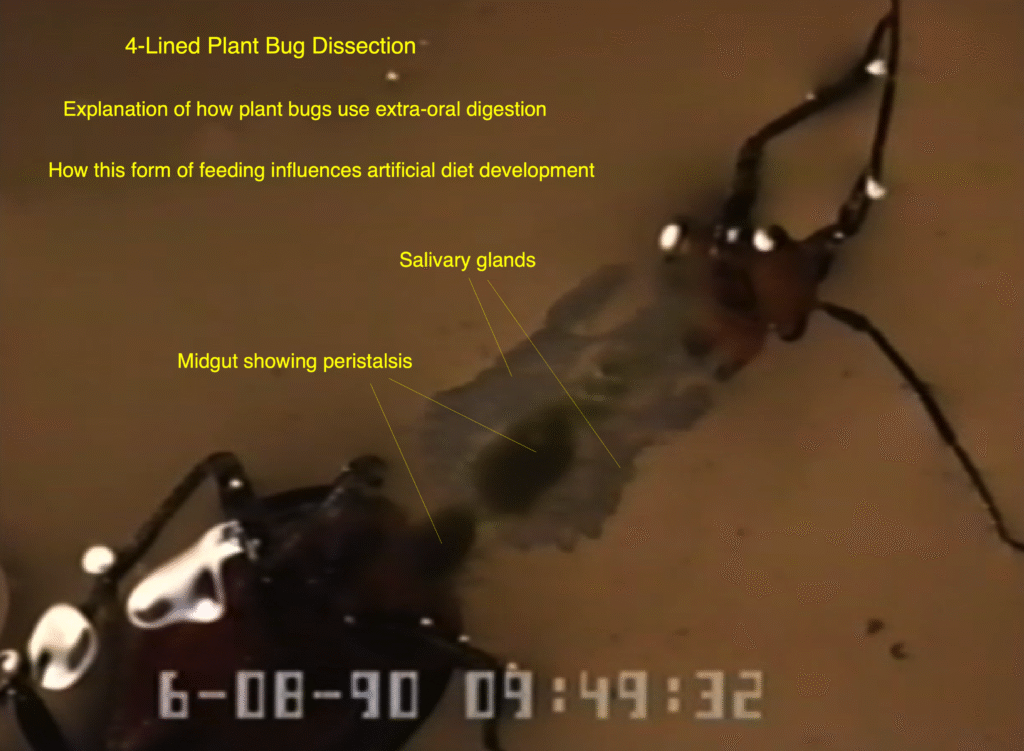
Figure 1. Graphic explanation of how a plant bug uses extra-oral digestion (EOD) to feed on plant leaf tissues. I use this case study as an example of how EOD used by many insects to pre-digest their meal before ingesting it can lead to development of an artificial diet. In this case study, I explain how Dr. Jack Debolt developed the first working diet (Debolt 1982) for the western tarnished plant bug, Lygus hesperus. But the rest of the story is how misunderstanding the true nature of plant bugs’ feeding biology led to decades of failure to develop artificial diets for members of this family. The 4-lined plant bug, Hemiptera: Miridae, does impressive damage to various plants due to its use of tissue-macerating enzymes from these huge salivary glands (Cohen, A.C. and A.G. Wheeler. 1998. Role of saliva in the highly destructive four-lined plant bug (Hemiptera: Miridae). Annals Ent. Soc. Amer. 91:94-100.). The Case Study here on development of artificial diets for plant bugs and other Hemiptera serves as a crucial and fascinating lesson in why it’s important to “KNOW YOUR INSECT.”
The case studies in the current course on Fundamentals of Insect Rearing Systems support the rationale for in-depth understanding of our reared insects’ biology.
